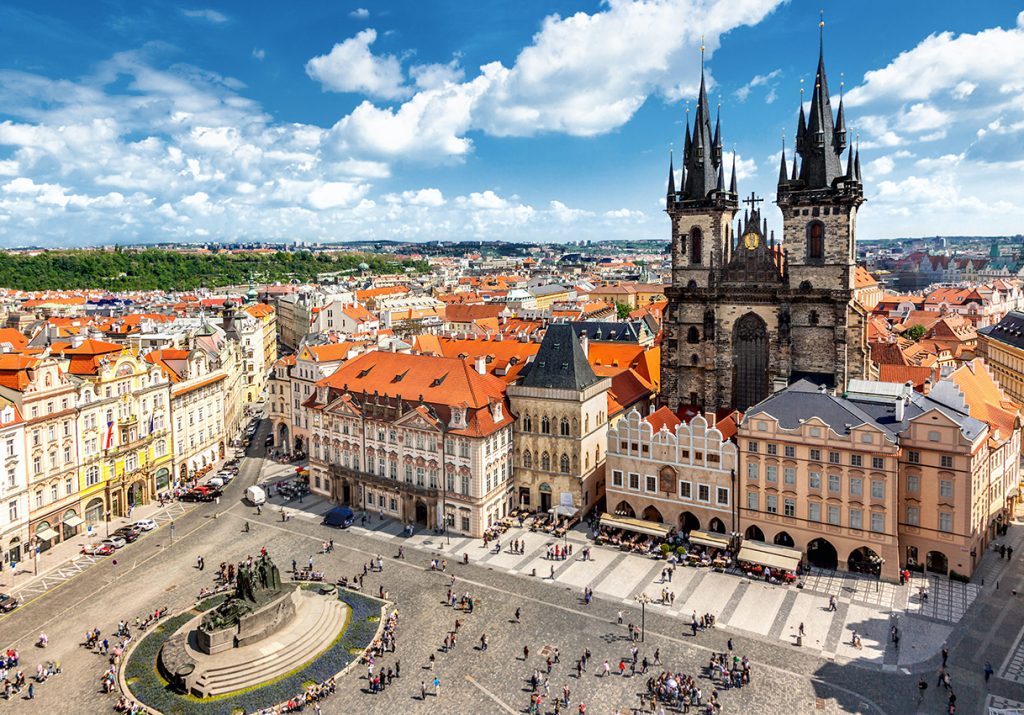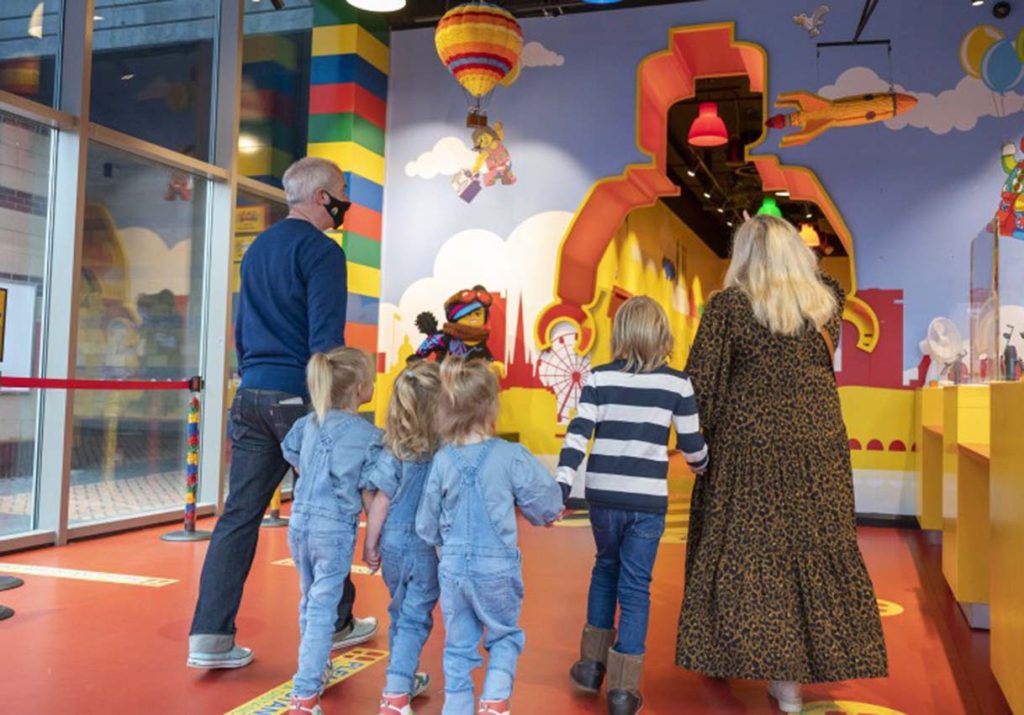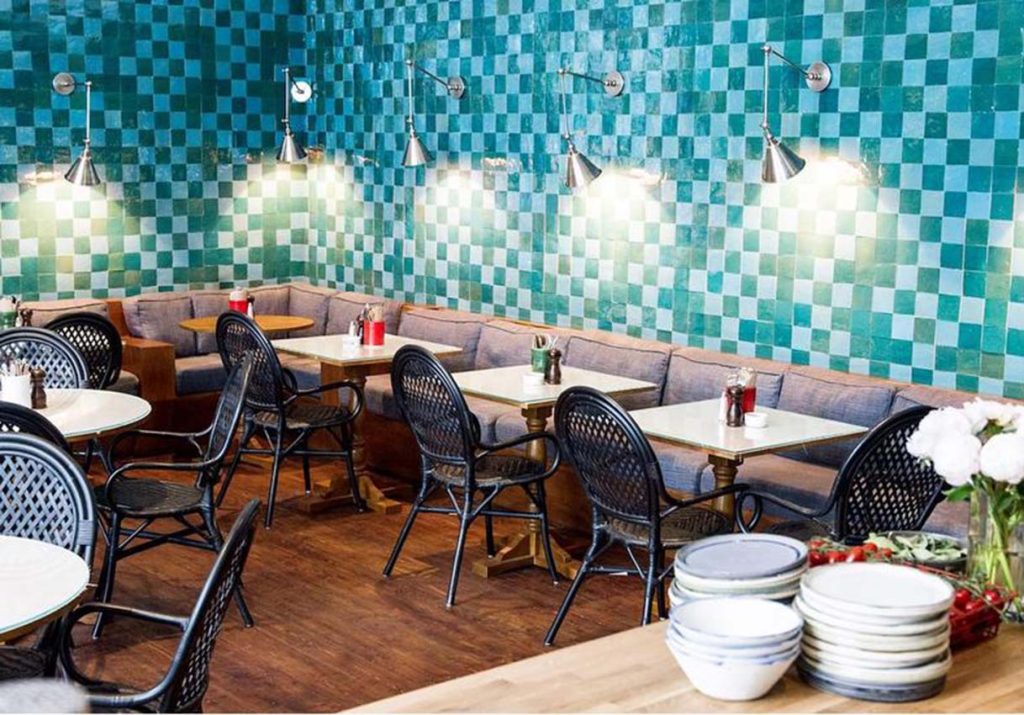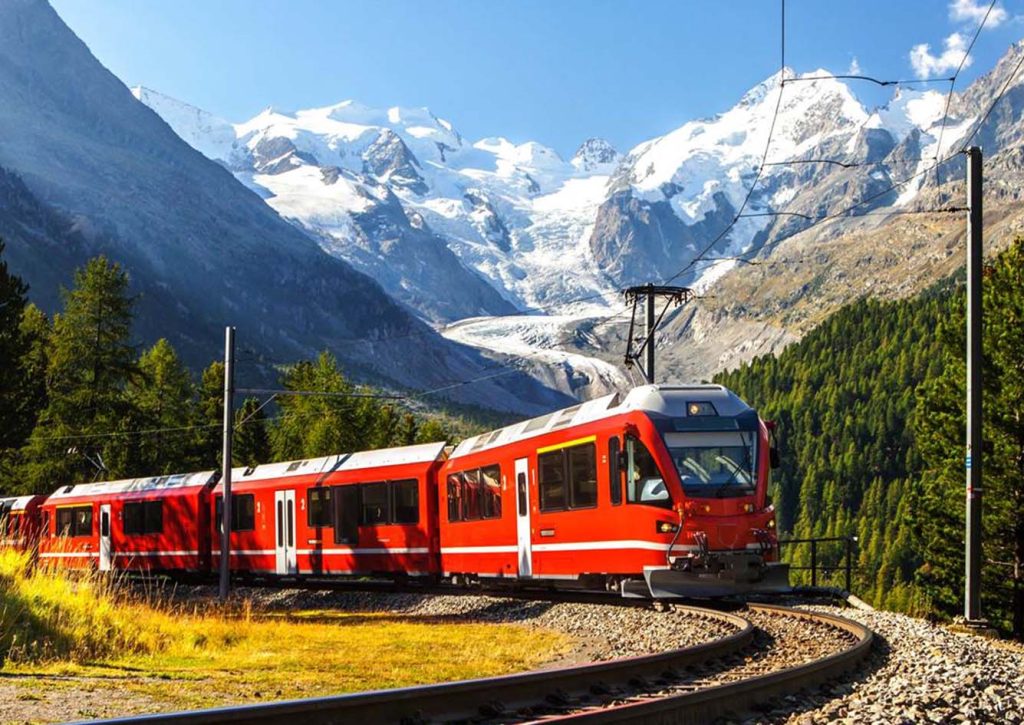From the magical aura of the Old Town to the iconic Charles Bridge, Prague has always been a city that pulls at my wanderlust. Let’s journey beyond the city’s usual tourist offerings and delve into some of its more unique attractions.
St. Jacob the Greater Church
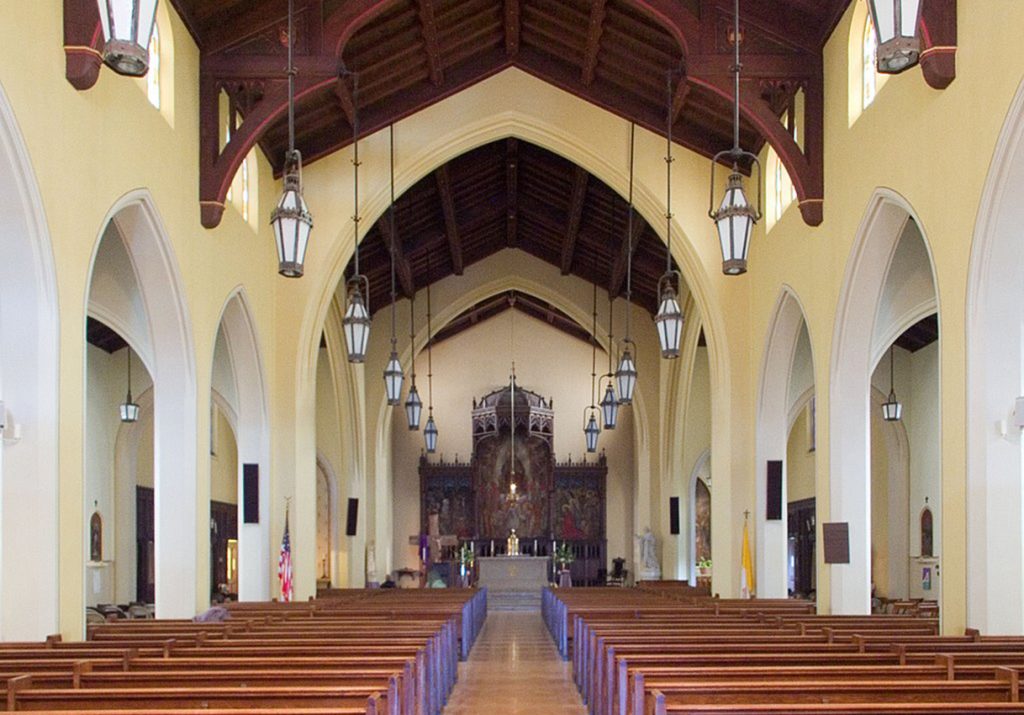
In the heart of the Old Town, I discovered St. Jacob the Greater Church, an underappreciated gem amidst Prague’s crowded attractions. The moment I stepped through the massive wooden doors, I was enveloped by a sense of tranquillity that seemed to permeate the air. As I gazed up at the intricate Baroque architecture, with cherubs, saints, and golden embellishments competing for space on the ceiling, I was awestruck by its grandeur. Lost in the echoing silence, I ambled slowly down the aisle, the old wooden pews polished to a shine by years of faithful congregants. The centerpiece of the church was the towering main altar, elaborately adorned with sculptures and gold leaf, displaying a keen attention to detail that was simply stunning. The pipe organ, perched in the balcony, captivated me with its complex structure and its promise of a haunting melody. I was lucky enough to visit during a scheduled organ concert, the resonant music filling the church interior, creating an experience that was deeply moving. The paintings adorning the walls each told a story of their own – narratives of faith, trials, and redemption. In the quiet side chapels, I found a moment of solitude, a place to reflect amid the vibrancy and clamor of the city outside. I remember being particularly moved by a small alcove dedicated to St. Jude Thaddeus, lit by a solitary candle, adding a layer of mystery to the saint’s statue.
Charles Square

While the allure of Prague’s Old Town Square is undeniable, I sought a change of pace, a less frenetic atmosphere. This pursuit led me to Charles Square, upon arriving, I noticed the quaint buildings lining the square, their pastel facades offering a charming backdrop to my afternoon. In the middle of the square, the expansive park provided a welcome burst of green in the midst of the city. I found a comfortable spot on one of the numerous benches, facing the dominating statue of Charles IV – the square’s namesake. The tranquillity of Charles Square was almost meditative. I reveled in the opportunity to slow down, people-watch, and just breathe. Families strolled by, children chasing pigeons with innocent laughter. Students from the nearby New Town Hall were engrossed in their books, while couples walked arm in arm, whispering sweet nothings. I was an observer to these simple, everyday moments, feeling an intimate connection to the city’s local life. Soon, the aroma of cinnamon wafted through the air. Following my nose, I found a small kiosk selling trdelník, a traditional Czech pastry. I watched with fascination as the vendor wrapped the dough around a skewer, grilled it over an open flame, and then rolled it in a sweet mixture of sugar and cinnamon. Biting into the warm, sugar-crusted pastry, I closed my eyes, savoring the crunch of the outer layer, followed by the soft, steamy interior. Paired with a cup of local coffee, it was a delight.
Bethlehem Chapel
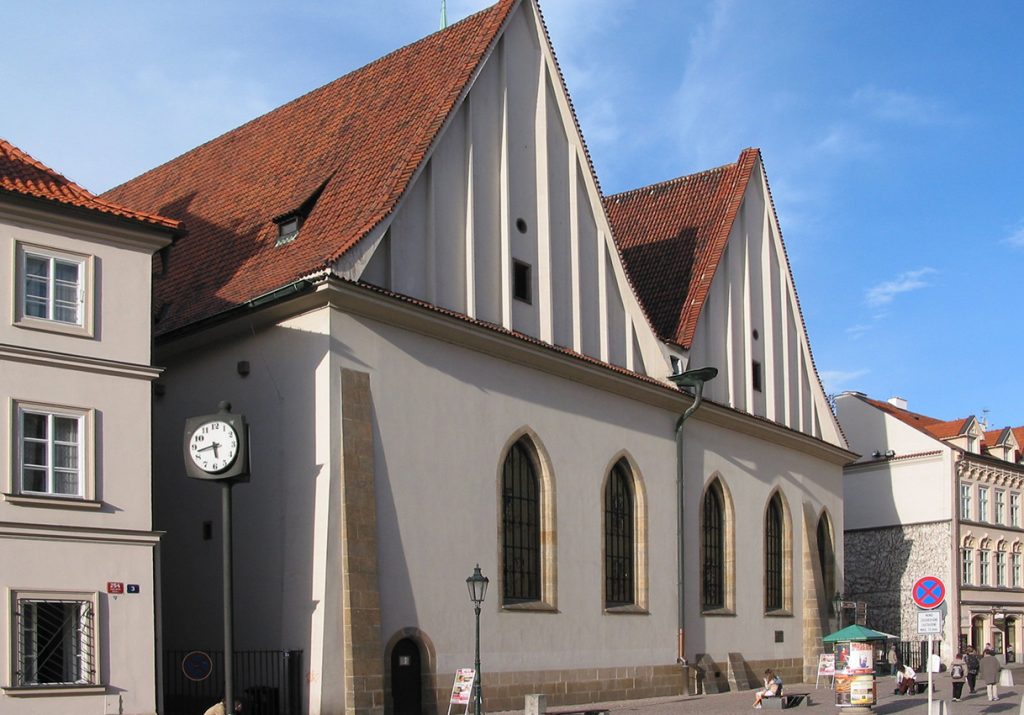
I stumbled upon Bethlehem Chapel, a serene oasis situated amidst Prague’s lively streets. Unlike the extravagant churches that typically dot the city, Bethlehem Chapel’s austere facade intrigued me. It was this stark simplicity that drew me in, inviting me to delve deeper into the rich religious history of Prague. As I walked through the humble wooden doors, I was greeted by the vast, minimalistic interior. The high ceilings and wide, unadorned arches lent the chapel an air of understated grandeur. I strolled along the nave, tracing the footsteps of countless believers who had once flocked here to hear the powerful words of Jan Hus, a herald of the Reformation and a pivotal figure in Czech history. Staring at the pulpit where Hus once stood, I could almost hear echoes of his sermons championing religious reforms, equality, and the use of the Czech language in liturgy. I took a moment to marvel at the replica of Hus’ statue, a striking symbol of the courage and defiance that still resonate today. The walls were adorned with simple frescoes, their muted tones and simplistic figures standing in stark contrast to the gilded ornate artistry found in many other religious establishments. They illustrated biblical stories, portraying them in a manner that was accessible to all, much like Hus’ teachings. There was a small museum attached to the chapel, where I immersed myself in Hus’ life and work. Through the ancient manuscripts, I got a glimpse into the influential movement he led, which eventually resulted in the Hussite Wars, significantly shaping Czech and European history.
Vítkov Hill

Always seeking a view from the top, I decided to take the road less travelled by most tourists in Prague and embarked on the climb to Vítkov Hill. It’s an understated treasure, a quiet getaway within the city, that was about to provide me with an unforgettable experience. The climb itself was invigorating. The path meandered through a lush park, the chirping birds and rustling leaves providing a soothing soundtrack to my ascent. As I gradually ascended, snippets of the city skyline began to peek through the tree line, only adding to my anticipation of the view that awaited me. Once I reached the summit, I was greeted by the imposing equestrian statue of Jan Žižka, a testament to the Czech history of resilience and strength. But as commanding as the statue was, it was the panoramic view of Prague that truly took my breath away. I was looking at a living postcard, with the city’s historic rooftops stretching out under the cerulean sky, intercepted only by the curving ribbon of the Vltava River and the towering spires of Prague Castle.
Infant of Prague
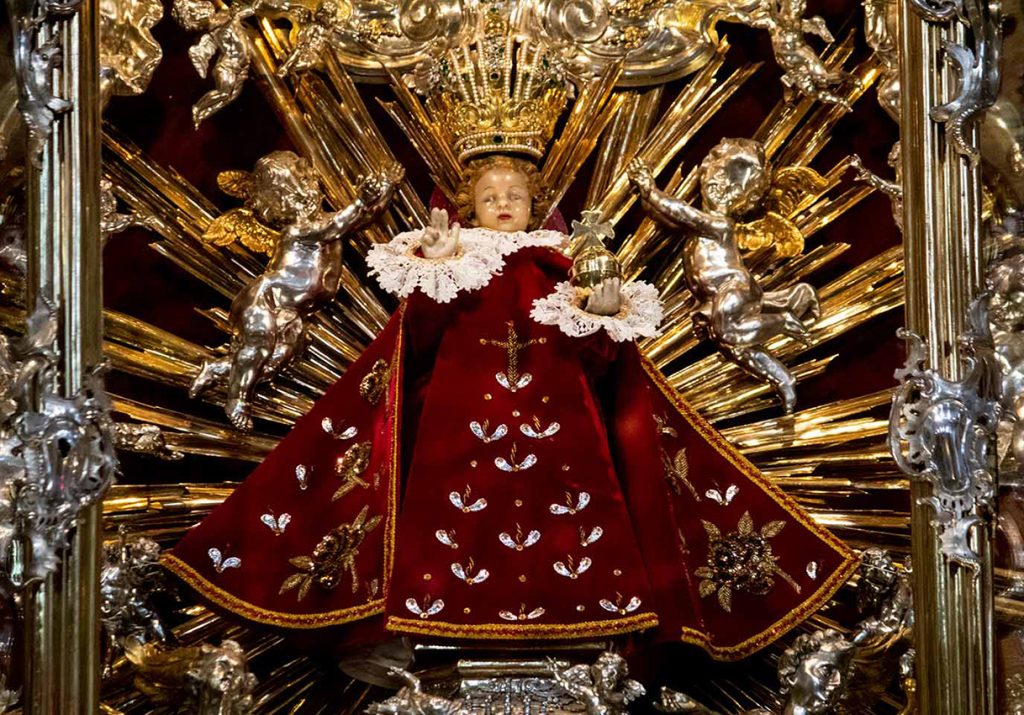
Tucked away in the Mala Strana district, I discovered the Church of Our Lady Victorious, home to the cherished Infant of Prague statue. I was initially struck by the church’s serene beauty, but it was the stories that lay within its walls that truly captivated me. Stepping inside, my eyes were immediately drawn to the ornate altar, and perched atop was the famous Infant of Prague statue. The small wax figure, dressed in an elaborate royal robe and adorned with a golden crown, was a stark contrast to the overall simplicity of the church. I was struck by the reverent silence that surrounded the statue, a testament to the profound faith it inspired in its devotees. As I moved closer, I could see the different outfits displayed around the statue. I learned that these were seasonal vestments, changing according to the liturgical calendar. Intrigued by this custom, I found out it was a tradition dating back to the 17th century, further deepening my understanding of the faith and devotion surrounding this small statue. What fascinated me the most was the rich history behind the Infant of Prague. The statue was believed to have protective powers, safeguarding the city from disaster and ruin. The stories of miracles associated with it were numerous, each tale adding another layer to the deep reverence held for this small figure.
Paternoster Elevator
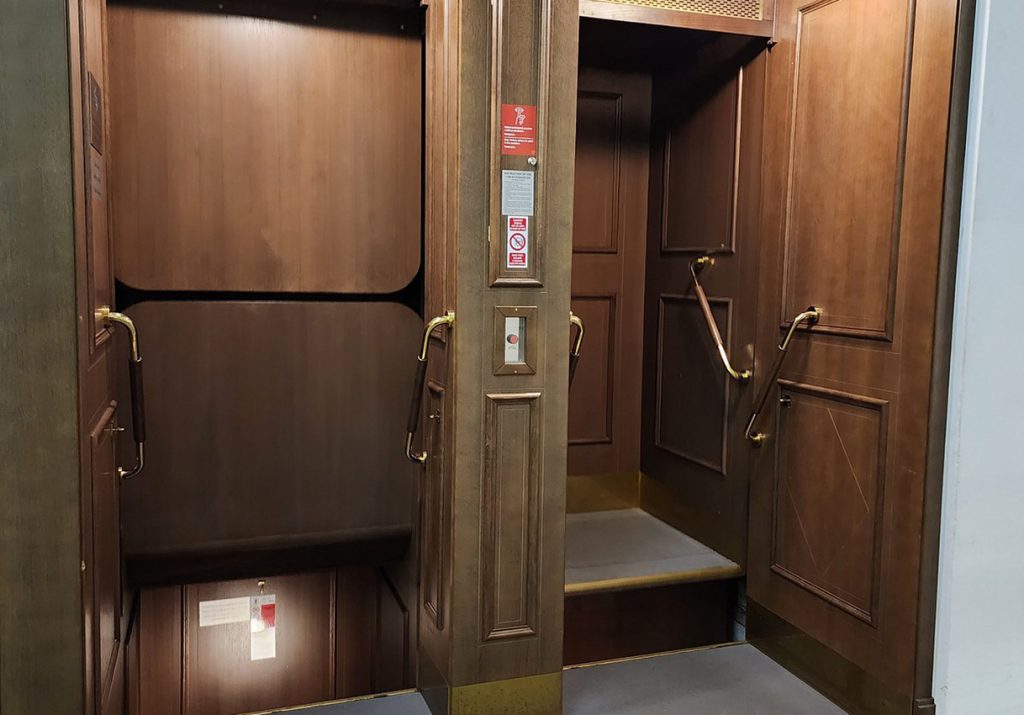
I love to find the unusual, the quirky, the slightly offbeat in a city, and in Prague, it was the Paternoster Elevator that caught my curiosity. A relic from another era, hidden away in the bowels of the Prague City Hall, this unique contraption had me both intrigued and slightly apprehensive. For those unfamiliar, a Paternoster is a passenger elevator which consists of a chain of open compartments that move slowly in a loop without stopping. The very idea of it sounds like something out of a steampunk novel. Walking into the lobby, I was greeted by the soft mechanical hum of the elevator. There it was – the Paternoster, an endless chain of small cabins moving slowly, continuously, in a rectangular shape. It felt like stepping into a time machine. I watched as locals hopped on and off with a practiced ease that comes from daily usage. Drawing in a deep breath, I stepped into one of the compartments. It was a tight fit, the cab just large enough for two people standing close. There were no buttons to press, no doors to close, just the gentle movement of the cab carrying me upwards. The feeling was oddly thrilling. Emerging at the top floor, I had a moment of apprehension as the cab approached the top of the loop, but it smoothly and safely dipped over and began its descent. There was an odd sense of satisfaction, almost like successfully navigating a rite of passage.
Petrín Tower
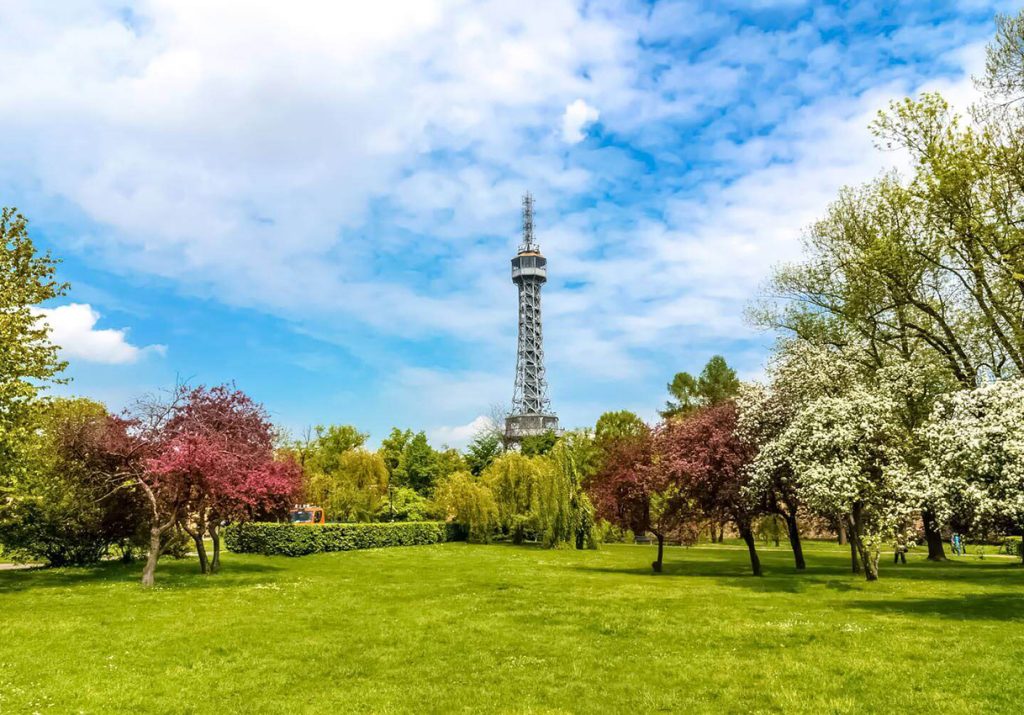
Perched atop Petrín Hill, the Petrín Tower is known affectionately as Prague’s “Little Eiffel Tower.” At first, the thought of climbing the 299 steps to the top was daunting, but I can assure you, the effort was more than worth it. Starting at the base of the hill, I began the walk up, surrounded by the charming Petrín Gardens. The path twisted through verdant greenery, with the Prague Castle peeking out between the trees. It was a pleasant ascent, not too steep, and the anticipation of reaching the tower kept my spirits high. Once I reached the tower’s base, I took a moment to appreciate its architectural elegance. Mimicking the famed Eiffel Tower, the structure was an intricate lattice of metal, a testament to the impressive engineering of the late 19th century. The climb up the narrow spiral staircase was an experience in itself. The rhythm of my footsteps echoed off the metal structure, harmonizing with the faint whispers of the city below. As I climbed, the view from the windows went from enticing to mesmerizing. Prague unfurled below me in all its glory, the red-tiled roofs creating a stunning tapestry against the backdrop of the Vltava River. When I finally reached the top, I was simply awestruck. From the observation deck, I had a 360-degree view of Prague. I could see the Prague Castle, Charles Bridge, the Old Town Square, and much more. I watched the city pulse beneath me, the bustling streets contrasting with the tranquil flow of the river.
Cubist Architecture
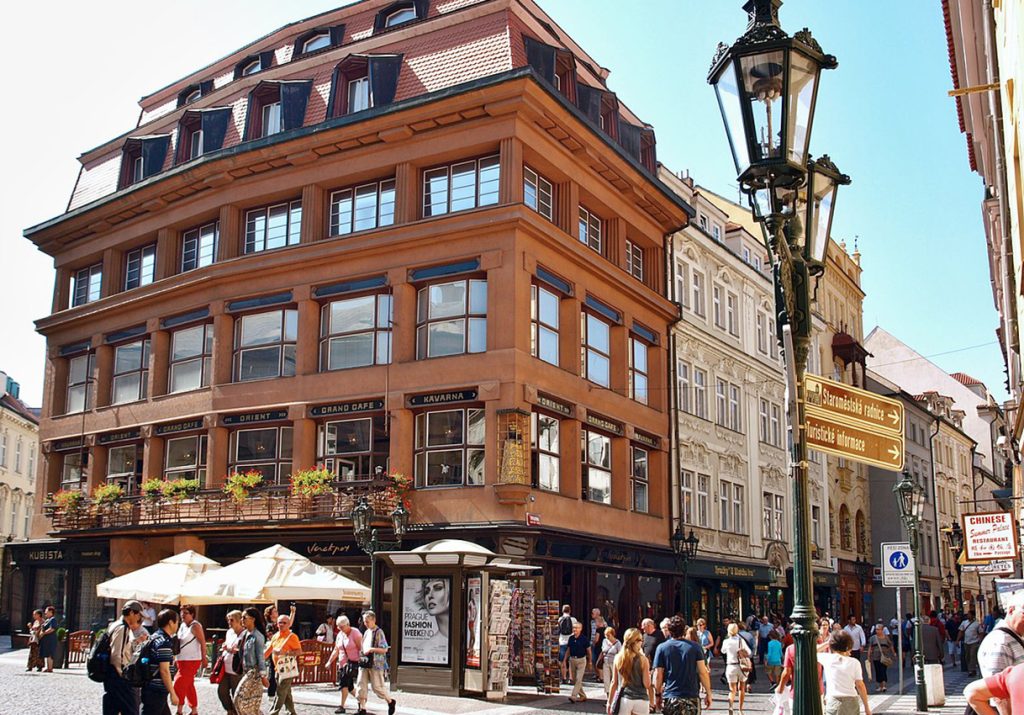
In Prague, it was the distinct Cubist architecture that caught my attention. This rare architectural style is unique to the Czech Republic, with Prague showcasing some of the best examples. I spent an entire afternoon exploring these remarkable structures that seemed to challenge the norms of architecture, turning corners into edges and redefining the aesthetic principles of building design. Walking through the city streets, it felt as if I had stepped into a 3D Picasso painting.The crowning jewel of my exploration was the House of the Black Madonna. This Cubist masterpiece is tucked away in the corner of the bustling Old Town, standing in stark contrast to the surrounding Baroque and Gothic buildings. It was fascinating to see how the traditional forms were reimagined into sharp, angular shapes and how the facade seemed to play with light and shadow. Stepping inside the building was like entering another dimension. The staircases, the doors, even the small details on the windows, all followed the same geometric intricacy. The way the building skillfully manipulated space was a testament to the innovative spirit of Cubist architects. While there, I also visited the Museum of Czech Cubism located within the building. Here, the Cubist theme extended to furniture, ceramics, and graphic design, showing the pervasiveness of this art style in early 20th century Czech society. But the real treat was the Grand Café Orient on the first floor. I enjoyed a cup of coffee in the unique cubist interior, from cubist chairs to lamps, all while overlooking the lively streets of Old Town through the large geometric windows.
Prague Metronome
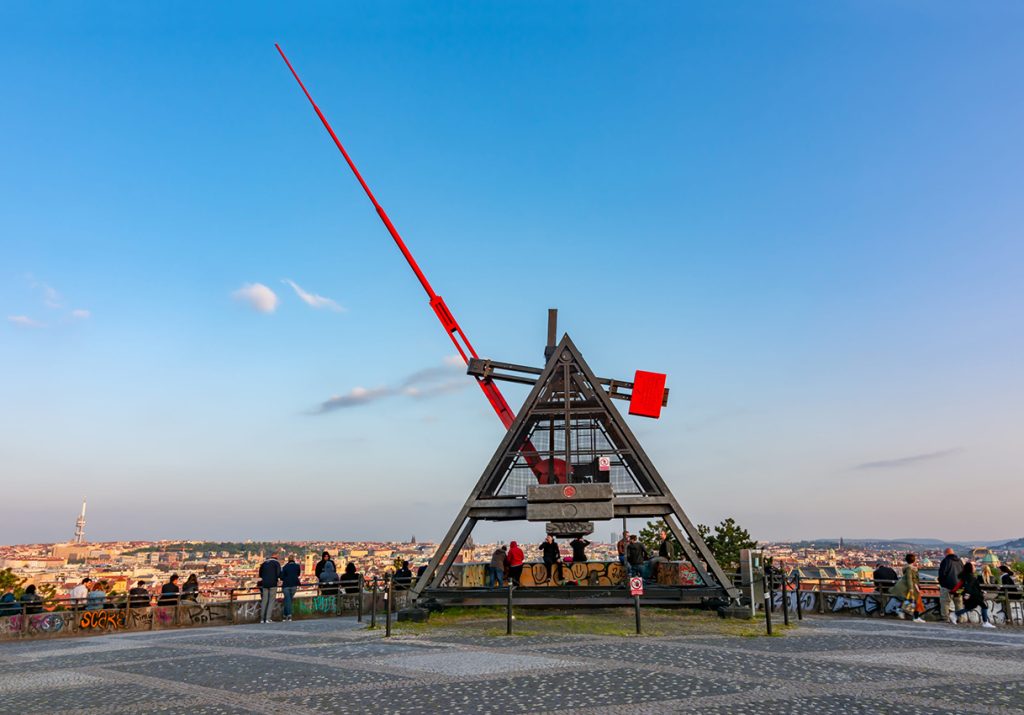
Tucked away in Letna Park, this peculiar monument stands as a symbol of the city’s past and its steady march into the future. As I climbed the stairs leading up to the Metronome, I could sense the layers of history these grounds held. Where now stands the Metronome was once the site of the world’s largest Stalin statue, a monumental structure that dominated Prague’s skyline. Its eventual demolition in 1962 left an emptiness that was filled years later by the Metronome in 1991, a symbolic transition marking the city’s evolution. Standing before the Metronome, I was intrigued by its rhythmic ticking, a steady pulse that echoed through the open space. It was mesmerizing to watch the giant pointer swing back and forth, the rhythm a comforting constant in the ever-changing cityscape. As I leaned on the railings, I let my gaze wander beyond the Metronome, drinking in the stunning panorama of Prague laid out before me. The vista stretched across the river, the red roofs of the city gleaming in the afternoon sun, the iconic Prague Castle standing guard in the distance. It was a perfect spot for contemplation and appreciation of the city’s beauty.
Day Trip to Bohemian Paradise Geopark
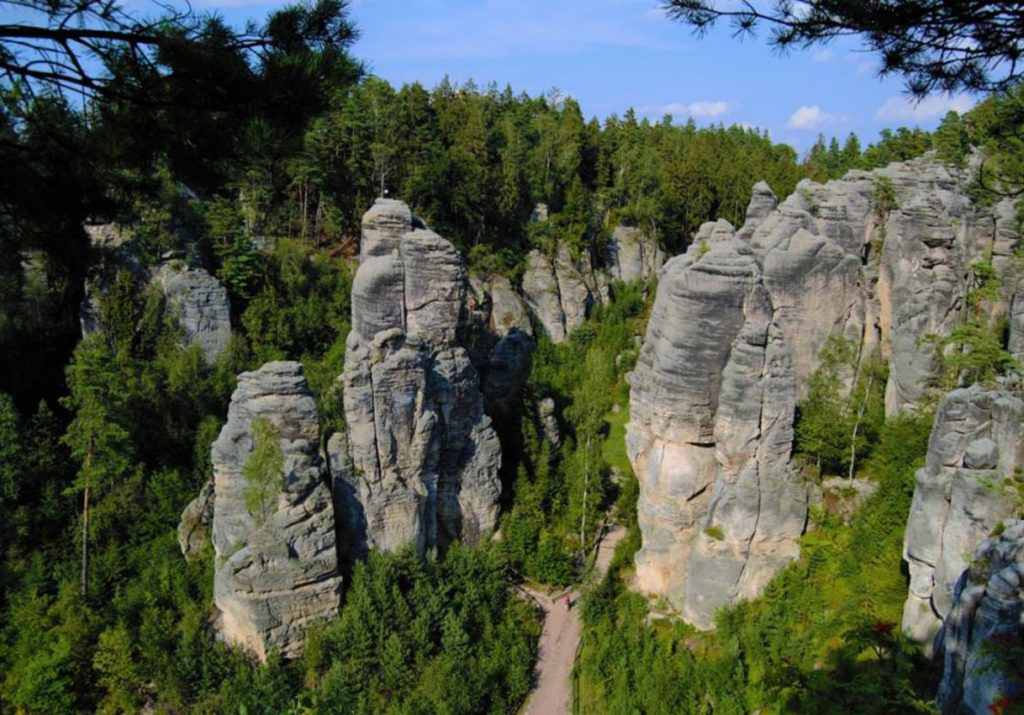
The geopark, known as Český ráj in Czech, is just a short drive from Prague, making it a perfect day trip destination. As soon as I arrived, I was struck by the diverse beauty of this UNESCO-protected area. Rolling hills, dense forests, meandering rivers, and peculiar rock formations create a landscape that lives up to its name – it truly felt like a slice of paradise. My first stop was the Prachov Rocks, a cluster of sandstone formations that seemed to have been sculpted by an artist’s hand. The rocks, some towering over 40 meters, create a maze of narrow passages and viewpoints that offer breathtaking views of the surrounding forest. The climb was a bit challenging, but reaching the top and seeing the panoramic view was worth every drop of sweat. Next, I visited the charming medieval town of Jičín, often referred to as the gateway to the Bohemian Paradise. I took a leisurely stroll through Valdštejn Castle, an early 14th-century Gothic castle, with its sprawling gardens, providing a tranquil setting for a midday picnic. But the true highlight of my trip was the hike through the Kost Castle, a fortress perched on a steep rock outcrop. As I explored the castle grounds, I could imagine the knights and nobles who once called this place home.
In Prague, beyond every cobblestone path lies a hidden treasure waiting to be discovered. Each of these off-beat attractions added a distinct flavor to my Prague adventure. As I meandered through the city, I discovered that the real charm of Prague doesn’t just lie in its well-known sights but also in its lesser-explored corners.
